Our Blog
Heartworms/Parásitos del Corazón
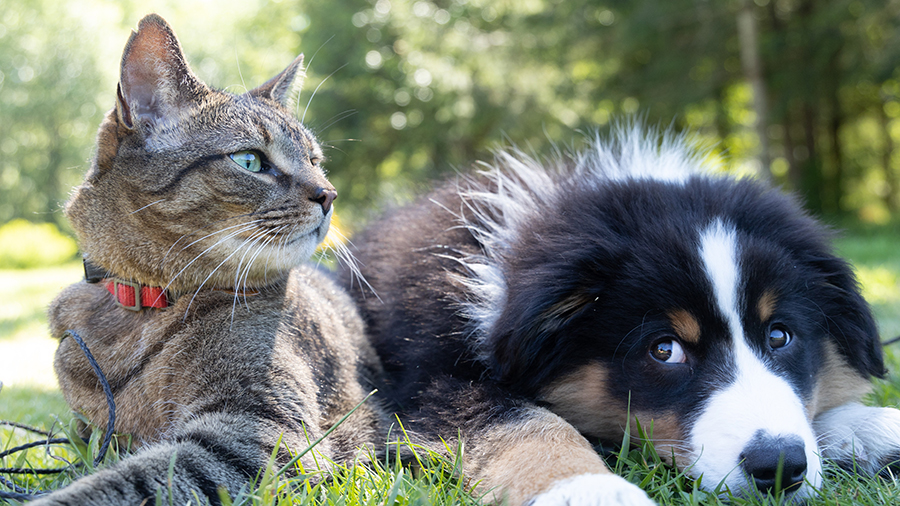
En español
Con el verano acercándose, muchos de nosotros pensamos en el riesgo de las pulgas, garrapatas y parásitos intestinales pero no se olviden de los parásitos del corazón! El parásito del corazón es transmitido por los mosquitos y causa daño irreversible al corazón, las arterias, y los pulmones. No existe cura en los gatos y el tratamiento en los perros es costoso, doloroso, y toma un promedio de un año.
Muchos piensan que sus mascotas no están a riesgo de infección en Illinois como tenemos inviernos largos, pero solo se necesita una mordida de un mosquito que lleva el parásito para ser infectado. Aunque su mascota no salga de la casa, los mosquitos pueden entrar por las ventanas, garajes, puertas, etc.
Es importante realizar que la prevención no previene la exposición y aunque los medicamentos preventivos no matan al parásito adulto, se usan para prevenir la madurez de los gusanos. Si el medicamento preventivo se da sin prueba de diagnóstico y el perro está infectado, no solo se quedará infectado pero también puede causar reacción parecida a un shock. En casos inusuales, también puede resultar en fallecimiento de la mascota.
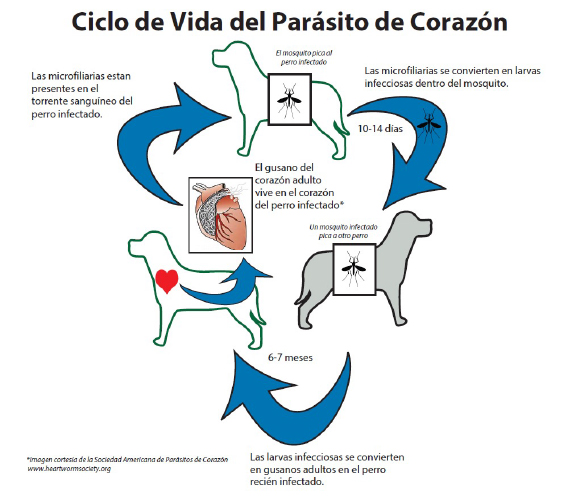
Los gusanos adultos parecen espagueti cocido y pueden llegar a 12 pulgadas. La carga parasitaria puede variar de 1 a 250 gusanos con un promedio en los perros de 15 gusanos! La severidad de los síntomas depende de la carga parasitaria, el nivel de actividad de la mascota, y cuánto tiempo ha estado infectado. Los síntomas más comunes son tos, dificultad para respirar, fatiga, falta de apetito, y pérdida de peso.
El mejor tratamiento es la prevención!
La buena noticia es que existen varios medicamentos preventivos para los perros y gatos! Se necesita una prueba negativa una vez al año (en los perros) para poder recetar el medicamento. Si su mascota no ha tomado la prevención del parásito del corazón de manera constante durante los últimos 12 meses, debería hacer una cita con su veterinario para hacer un análisis de sangre para comprobar un resultado negativo y poder recetar prevención. Hay varias formas de prevención y su veterinario le puede recomendar cual usar basada en su estilo de vida.
In English
With summer approaching, many of us think about the risk of fleas, ticks, and intestinal worms. But don’t forget about heartworms! Heartworms are transmitted by mosquitoes and cause irreversible damage to the heart, arteries, and lungs. There is no cure in cats, and treatment in dogs is expensive, painful, and takes an average of one year.
Many think that their pets are not at risk of infection in Illinois since we have long winters, but it only takes one bite from a mosquito that carries the parasite to be infected. Even if your pet does not leave the house, mosquitoes can enter through windows, garages, doors, etc.
It is important to realize that prevention does not prevent exposure. Although preventative medications do not kill the adult parasite, they are used to prevent the worms from maturing. If the preventative medication is given without a diagnostic test when the dog is already infected, the dog will not only stay infected but the medication can also lead to a shock-like reaction. In rare cases, it can also result in the death of the pet.
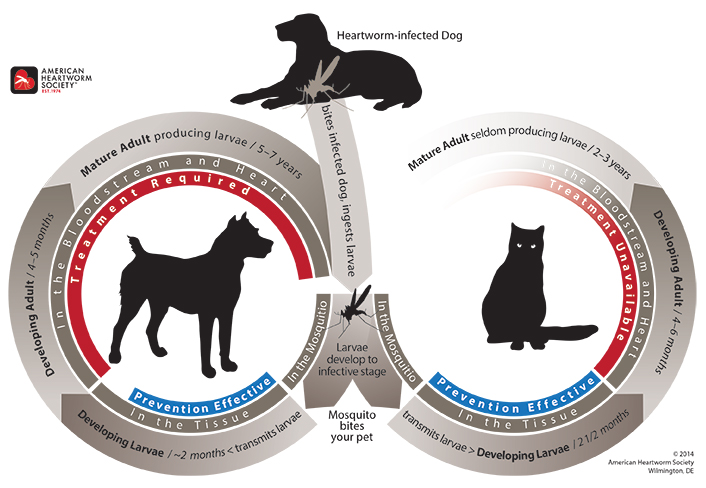
Adult worms look like cooked spaghetti and can grow to 12 inches. The parasite load can range from 1 to 250 worms, with an average of 15 worms in dogs! The severity of the symptoms depends on the parasitic load, the pet’s activity level, and how long they have been infected. The most common symptoms of a heartworm infection are cough, shortness of breath, fatigue, lack of appetite, and weight loss.
The best treatment is prevention!
The good news is that there are several preventative medications for dogs and cats! A negative test is needed once a year (in dogs) before the drug can be prescribed. If your pet has not been on heartworm prevention consistently for the past 12 months, you should make an appointment with your veterinarian for a blood test to confirm a negative result so prevention can be prescribed. There are various forms of prevention, and your vet can recommend which one to use based on your lifestyle.
– Dr. Ana Valbuena
Even Vets Sometimes Need Vets
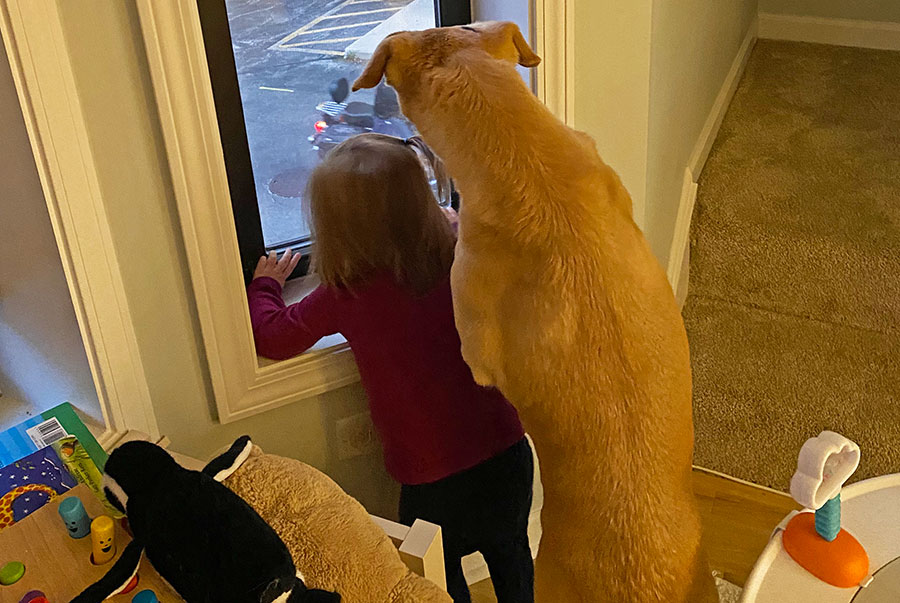
I need to come clean: I’m a bit of a lazy dog owner. I don’t brush Emmie’s teeth, I’m usually a few days late to remember her heartworm, flea, and tick preventatives, and we only did the bare minimum with training to curb Emmie’s issue with meeting strangers.
COVID Shut Down Puppy Socialization
Like most of you, our lives drastically changed March 2020. Not only did COVID become part of our lives, but we also welcomed our first daughter. (My first time leaving the house without her to run an errand was the day the governor shut the state down.)
So, what little progress we made with Emmie meeting strangers and with getting her used to people coming into the house went out the window. And my family wasn’t not alone.
Now that many people are heading back to work, we are seeing a lot more behavioral issues with pets as they are trying to adjust to post COVID life. For my family, this transition has been tough, because now not only do we have a dog that is even worse with strangers, but we must think about playdates with handsy toddlers with underdeveloped pre-frontal cortexes.
Time to Ask for Help
We were at a loss. The thought even crossed my mind that we may need to rehome our dog. I’ve helped a lot of clients manage routine behavioral issues, but some issues require looking to veterinarians who have more training and certification in their specialties.
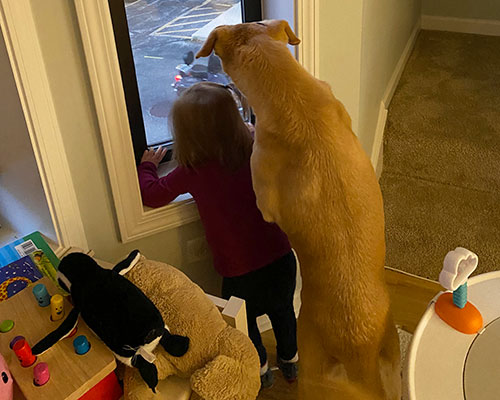
So that’s what my family did. We have started working with a boarded veterinary behaviorist. You may have found being referred to a specialist frustrating (and at times expensive) when I or one of my colleagues recommended that. However, please know that it’s because we want what’s best for your pet. And sometimes, we don’t have that particular skill set. Even we need help sometimes.
We have a long road ahead of us with Emmie, but I’m hoping that as we welcome our second daughter to our family this summer, with some training and tweaking medications, things will get better. I’m hoping that maybe this time around, my maternity leave will involve having more family and friends meet our baby girl in person instead of over Zoom.
Bringing Home (Another) Baby
This is probably a good time to mention that I will be on leave from the end of June (unless this little one decides to come early) through the end of October. I would also like to thank our medical director, Dr. Sullivan, for being so supportive with scheduling my leave and return to work. And the amazing staff at Medical District Veterinary Clinic have been so supportive and helpful as they watch me waddle from patient to patient, never complaining that I’m not as able to help with certain tasks, which means more work for them.
I am so grateful to be part of this incredible team, and although I am looking forward to having a warm summer, pandemic-free (fingers crossed) maternity leave, I know I will be excited to come back in the fall.
— Dr. Alyssa Kritzman
The State of the Medical District Veterinary Clinic
(from Dr. Sullivan’s perspective)
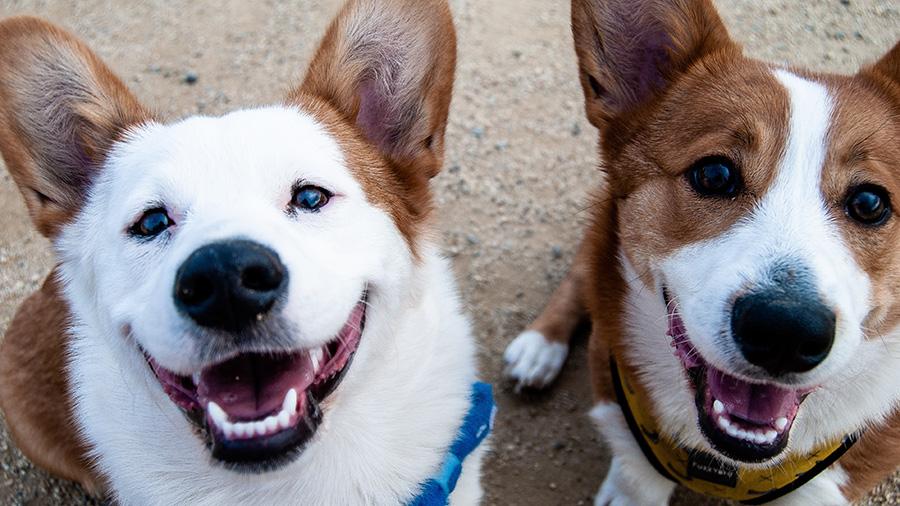
We’ve Seen Some Changes
Change was happening within the veterinary profession even before the pandemic, but change has drastically accelerated over the past four years.
Today, there is a veterinarian and veterinary staff shortage, expenses have increased more than inflation, and the demand for veterinary care has increased. This has resulted in overworked and tired veterinary professionals.
At Medical District Veterinary Clinic, we have always striven to maintain a healthy work-life balance for our staff. Despite these recent challenges, we remain committed to that goal. This blog post shares the facts about the impact of changes on our clinic and what that means for our clients.
Lots of Growth in Veterinary Medicine
Since the start of the pandemic there has been:
- An increase in demand for veterinary services (and an increase in consumer spending overall)
- An increase in pet ownership in the US, from 67% of households to 70% of households (according to US News and World Report)
- An increase in spending on pets in the US, jumping 19% between 2020 and 2021 for a total of $123.6 billion annually (according to Forbes)
On grooming, pet food, veterinary care, and luxury pet items, households are spending more than ever before. The largest group of pet owners is millennials, making up 32% of pet owners, followed by baby boomers at 27%.
While on the surface, this sounds great for the veterinary industry, it has resulted in stress across the profession. Veterinarians, veterinary technicians, and support staff have been stretched thin. The staffing issues that already existed within the profession were made worse by the acute, dramatic change in demand.
Growth at Medical District Vet Clinic
Things were no different at our practice. At the height of the staffing challenges, we had veterinarians and support staff seek positions at other practices, leaving us short-staffed and unable to meet our client demand. Unfortunately, this resulted in our inability to meet all our patients’ needs, and we had to deal with many frustrated and upset clients. As a result, staff and veterinarians were further discouraged and facing burnout.
Fortunately, we were able to recruit and hire three veterinarians and three certified veterinary technicians. We are very lucky to be in a position to offer competitive salary and benefits packages to aid in recruitment. We are now fully staffed and able to provide staff with work-life balance while also having availability to see patients in a timely manner.
But Also Some Negative Developments
Negative effects on the veterinary industry since COVID include large increases in both overall expenses and no-show appointments.
A trend for increased veterinary expenses over the past few years saw the biggest bump up in late 2022/early 2023. Drug and medical supplies, laboratory costs, and staffing costs have all increased. Total costs have increased at a rate higher than US inflation.
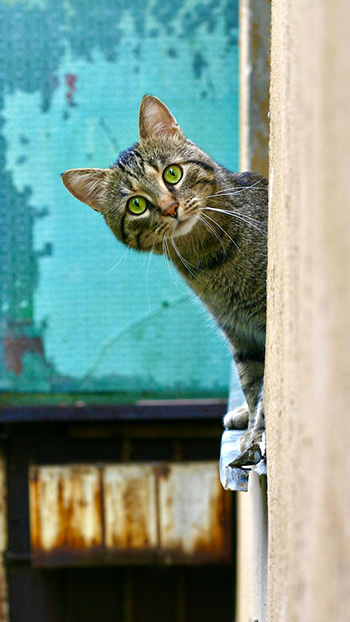
We have also seen a disappointing client trend, at our clinic and across the industry: a large increase in no-show appointments. We noticed this trend months ago and started tracking no-shows. We changed our confirmation protocol to help owners remember upcoming appointments, but that did not seem to make much difference.
March 2023 was by far our worst month: we had 92 no-shows. This is 92 more patients we could have helped or not had to refer to an emergency clinic if clients would have just called to let us know they would not be coming. As an existing client, you might be thinking this issue must be related to new clients, and you are partially correct. However, almost two-thirds of our no-shows are existing clients.
To combat this alarming new trend, we and other practices have implemented measures including cancellation/no-show fees or deposits required to book appointments.
How We Are Responding to These Trends
So what changes you can expect at the Medical District Veterinary Clinic? We will continue to strive to provide exceptional, high-quality veterinary care, while also providing our staff with the support to maintain a healthy work-life balance.
Because of the overall increase in expenses, we must increase prices to meet our costs. However, our prices for long-term medications will continue to match PetMeds’ online prices (see chart). Offering these medications at competitive prices provides convenience to our clients and allows us to help with clients’ issues or questions regarding pharmaceuticals. You also help us maintain that revenue stream when you purchase your pet’s medications from us instead of online.
| PetMeds Price-Matched Medications |
|---|
| Heartgard Plus (6/12 packs) |
| Sentinel Spectrum (6/12 packs) |
| NexGard (6/12 packs) |
| Simparica Trio (6/12 packs) |
| Senergy Cats (6/12 packs) |
| Rimadyl Chewable Tablets (60/90/180 count) |
| Deramaxx Chewable tablets (30/60/90 count) |
Beginning in May, we will also be instituting a deposit to book an appointment for all new clients as well as for existing clients who have a history of no-show.
We understand that sometimes life gets in the way, things happen, and clients may occasionally miss appointments. Unfortunately, the trends we are seeing have left us without another option. The deposit will be refundable if the appointment is canceled prior to 24 hours before the scheduled appointment. Please see here for the complete policy.
Thank you!
Lastly, I want to thank you all for trusting us in caring for your pets. I can speak on behalf of all the staff at Medical District Veterinary Clinic: We truly love what we do and daily have your pet’s best interest in mind.
Please don’t hesitate to reach out with any questions or concerns. Or compliments! Compliments for staff and doctors are always greatly appreciated.
Truly,
Drew Sullivan, DVM
Director, Medical District Veterinary Clinic
The Itchy Pet
Para leer el blog en español, haga clic aquí
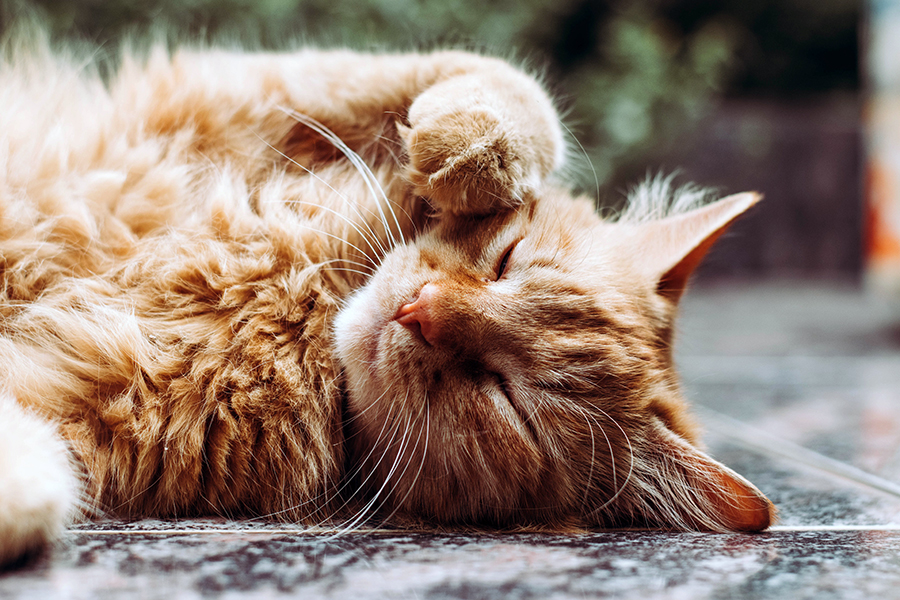
With Chicago’s changing weather, who knows what season we’re currently in right now? And with the season change comes … seasonal allergies, or just allergies in general.
That’s the tricky part that we veterinarians face. We have to investigate and determine what type of allergies your pet is experiencing, and if it is truly allergies versus something else.
As many of you may know, just like people get allergies, so do pets. The signs, however, can be a little different. Many times your pet will show signs of scratching, biting, chewing, and rubbing certain areas of their bodies. You can even see redness, inflammation, fur loss, and, in severe cases, open, infected wounds.
There are many components to allergies, and getting a detailed history from you during the initial vet visit is very important. So although it may seem like an interrogation in the exam room, this is when we are putting all of the puzzle pieces together in our head and thinking of the best diagnostic tests and treatment options for your pet. Each pet is different, and treatment varies on a case-by-case basis.
Flea Allergy
“My cat doesn’t go outside.” “My dog isn’t around other dogs.” “I’ve never seen any fleas on my pet.”
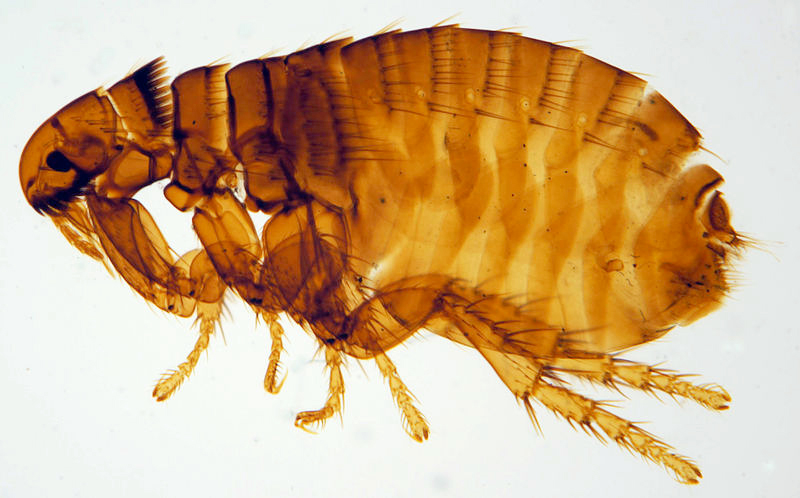
Just because you don’t see them, doesn’t mean they’re not there. Did you know that 1 female flea can lay between 20 and 50 eggs a day?
At times, the only evidence we have to suspect that there are fleas present is flea dirt, which is basically flea feces. Areas that can be affected by fleas include the tail base, neck region, and belly, although fleas can be found anywhere on the body.
A flea allergy is caused by the saliva of the flea itself. All it takes is a few bites to see clinical signs. Fleas can survive at a wide range of temperatures, so it is important to have your pet on flea and tick preventatives year-round to avoid flea allergy dermatitis. Read more about fleas.
Food Allergy
Pets can also have hypersensitivities to certain foods. Although potential allergens can include the food dye, carbohydrates, or preservatives, often it’s the protein source that is the culprit. A food allergy is diagnosed based on a detailed history and, most importantly, a strict food trial.
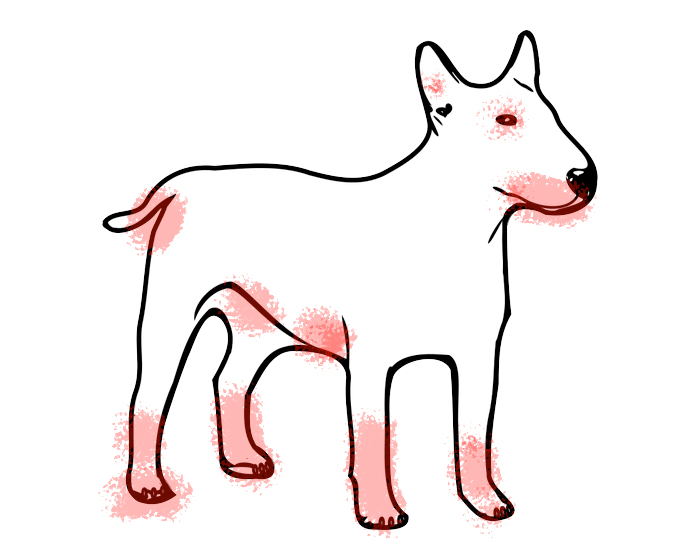
A food trial consists of feeding your pet a hydrolyzed diet or novel protein for a minimum of 8 weeks. This diet is very strict, and it is important that you only feed the novel protein or hydrolyzed diet. You must not feed any additional foods or treats. Keep in mind that many medications and monthly preventatives can be flavored so you must monitor closely what you are feeding and giving your pet. If after the trial period your pet is symptom free, a food challenge is performed. This consists of introducing the previously fed diet and watching for signs of itching or scratching. More details regarding a food trial can be discussed with your veterinarian. Read more about food allergies.
Seasonal vs Environmental Allergies
These can get tricky and hard to diagnose so, as previously mentioned, a thorough history becomes very important. We must investigate if there is any pattern to the clinical signs. Are the signs happening when it is warmer out vs colder? Do the signs show up after walks or after visiting certain areas, like a park or forest preserve? Every detail matters, so it is important to reach out to your veterinarian when your pet starts experiencing signs of excessive itching, scratching, licking, fur thinning, etc.
Treatment for Allergies
Treatment varies on a case-by-case basis. Ultimately, we want to control your pet’s clinical signs but also make your pet comfortable and clear of any secondary infections. Contact your local veterinarian when you start seeing any of the previously mentioned clinical signs.
There are several allergy medications to try. Each pet is different, and sometimes it can take some trial and error to find what works best for your pet, whether that is a single medication or a combination of medications. Allergy medications come in oral, injectable, and topical formats. Your veterinarian will determine which one suits you and your pet’s lifestyle.
Is It Even Allergies?
Although fur loss, fur thinning, over-grooming, and biting can be signs of allergies, these can also be signs of stress, especially in cats. Fur thinning and fur loss can even be signs of endocrine diseases, such as hyperthyroidism or hypothyroidism.
If your pet is experiencing any of the clinical signs mentioned throughout this post, please reach out to your veterinarian so they can determine the best diagnostic test and treatment options for your pet. You and your veterinarian form a team that wants the best for your pet.
– Dr. Angelica Calderon
Comezón de la mascota
Con el clima cambiante de Chicago, quién sabe en qué temporada estamos ahora. Y con el cambio de clima llegan… las alergias. Esa es la parte difícil a la que nos enfrentamos los veterinarios. Tenemos que investigar y determinar qué tipo de alergias está teniendo su mascota y si realmente se trata de alergias o de otra cosa.
Como muchos de ustedes saben, al igual que nosotros podemos tener alergias, las mascotas también pueden hacerlo. Sin embargo, nuestros signos pueden ser un poco diferentes. Muchas veces su mascota puede mostrar signos de rascarse, morderse, y masticar ciertas áreas de su cuerpo. Incluso se puede ver enrojecimiento, inflamación, pérdida de pelo y, en casos graves, heridas abiertas infectadas.
Las alergias tienen muchos componentes y es muy importante obtener un historial detallado durante la visita inicial al veterinario. Entonces, aunque pueda parecer un interrogatorio en la sala de examen, al mismo tiempo estamos juntando todas las piezas del rompecabezas en nuestra cabeza y pensando en las mejores pruebas de diagnóstico y opciones de tratamiento para su mascota, ya que cada mascota es diferente y puede variar según el caso.
Alergia a las pulgas

“Mi gato no sale”, “Mi perro no está con otros perros”, “Nunca he visto pulgas en mi mascota”. Que no los veas no significa que no estén ahí. ¿Sabías que una pulga hembra puede poner aproximadamente de 20 a 50 huevos por día? A veces, la única evidencia que tenemos para sospechar que hay pulgas presentes es la suciedad de pulgas, que es básicamente heces de pulgas. Las áreas que pueden verse afectadas por las pulgas incluyen la base de la cola, la región del cuello y el vientre; aunque se pueden encontrar en cualquier parte del cuerpo. Una alergia a las pulgas es causada por la saliva de la pulga y nada más se necesita algunas picaduras para ver los signos clínicos. Las pulgas pueden sobrevivir en un amplio rango de temperaturas, por lo que es importante que su mascota tome medicamentos preventivos contra pulgas y garrapatas durante todo el año para evitar la dermatitis alérgica por pulgas. Leer más sobre pulgas.
Alergia a la comida

Las mascotas también pueden tener hipersensibilidad a ciertos alimentos. Aunque los alérgenos potenciales pueden incluir colorantes alimentarios, carbohidratos o conservantes; lo más común es la proteína que es la culpable. Una alergia alimentaria se diagnostica en base a un historial detallado y una prueba alimentaria estricta. Una prueba de alimentación consiste en alimentar a tu mascota con una dieta hidrolizada o proteína novedosa durante un mínimo de 8 semanas. Esta dieta es muy estricta y es importante que solo le des la dieta proteica o hidrolizada novedosa. No debe alimentar con alimentos adicionales. Tenga en cuenta que muchos medicamentos y preventivos mensuales pueden tener sabor, por lo que debe controlar de cerca lo que alimenta y le da a su mascota. Si tu mascota está asintomática, se realiza un reto alimentario que consiste en introducir la dieta alimentada previamente y vigilar si presenta signos de picor o rascado. Se pueden discutir más detalles sobre una prueba de alimentos con su veterinario. Leer más sobre alergias alimentarias.
Alergias Estacionales y Ambientales
Estos pueden volverse complicados y difíciles de diagnosticar, por lo que como se mencionó anteriormente, un historial completo y detallado se vuelve muy importante. Debemos investigar si existe algún patrón en los signos clínicos. ¿Están ocurriendo los signos cuando hace más calor que cuando hace más frío? ¿Aparecen los signos después de caminatas o después de visitar ciertas áreas como un parque o una reserva forestal? Cada detalle es importante por lo que es importante comunicarse con su veterinario cuando su mascota comience a enseñar signos de picazón excesiva, rascado, lamido, adelgazamiento del pelaje, etc.
Tratamiento para Alergias
El tratamiento varía según el caso. Queremos controlar los signos clínicos de sus mascotas, pero también hacer que su mascota se sienta cómoda y libre de infecciones secundarias. Esto significa comunicarse con su veterinario local cuando comience a ver cualquiera de los signos clínicos mencionados anteriormente. Hay varios medicamentos para la alergia para probar, sin embargo, cada mascota es diferente y, a veces, puede tomar un poco de prueba y error para finalmente encontrar lo que funciona mejor para su mascota. Qué puede significar un solo medicamento o una combinación de diferentes medicamentos. En cuanto a los medicamentos, hay varias opciones orales para probar, así como opciones inyectables y opciones tópicas. Su veterinario determinará cuál se adapta mejor a usted y al estilo de vida de su mascota.
¿Es incluso alergias?
Aunque la pérdida de pelaje, el adelgazamiento del pelaje, el aseo excesivo y las mordeduras pueden ser signos de alergias; estos también pueden ser signos de estrés, principalmente en gatos. El adelgazamiento y la pérdida de pelo pueden incluso ser signos de varias enfermedades endocrinas como el hipertiroidismo o el hipotiroidismo.
Si su mascota enseña alguno de los signos clínicos mencionados en esta publicación, comuníquese con su veterinario para que pueda determinar las mejores opciones de prueba de diagnóstico y tratamiento para su mascota. Somos un equipo y queremos lo mejor para tu mascota.
– Dr. Angelica Calderon
Osteoarthritis: It’s Not Just for Older Pets
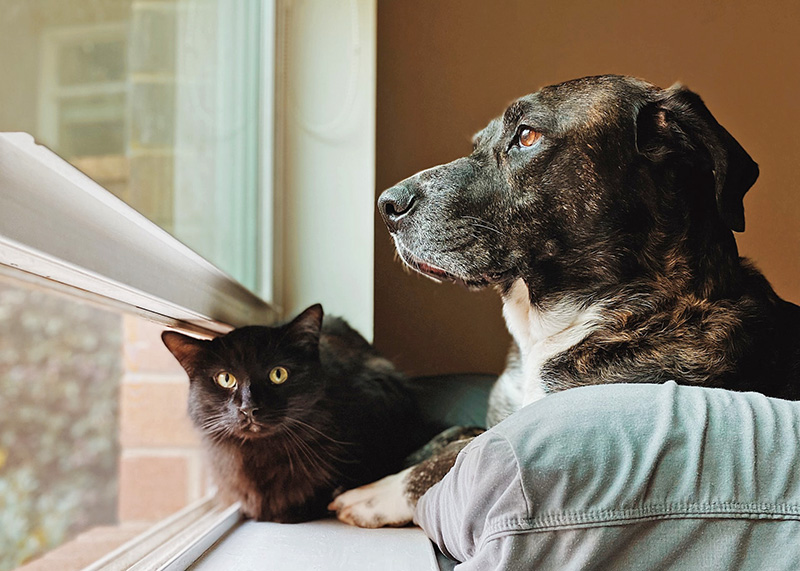
Osteoarthritis in pets is often thought of as a geriatric pet disease that warrants treatment when our pets are obviously painful and experiencing lameness. However, osteoarthritis often starts younger than you might expect, and pain may be present even before lameness is apparent.
Let’s start with what osteoarthritis is: it’s the most common form of arthritis and it is characterized by painful inflammation and degeneration of one or more joints. Over time, it can lead to bone-on-bone contact.
Many factors contribute to the disease process, including overweight or obesity, abnormal joint development, past injury or orthopedic surgery, and how a pet is built.
In dogs, early signs of this disease can include:
- restlessness or irritability,
- frequent position changes during rest,
- not as fast getting up or sitting down,
- weight shifting while standing,
- less interest in activity or play, and
- hesitation before walking, sitting, or climbing stairs.
Eventually, a dog may begin to limp, to experience stiffness when walking, and to have difficulty going up or down stairs and jumping up or down.
In cats, osteoarthritis may look like a reduction in play, grooming, socializing, and appetite, with increases in hiding and sleeping and changes in urination/defecation habits. Cats can also have trouble jumping up/down, climbing up or down stairs, running, and chasing objects.
Because this disease is painful and progressive, early diagnosis and treatment are important for long-term pain management and slowing the progression of the disease. Treatment includes a combination of pain medication, weight loss or maintenance, dietary changes, environmental modification, and exercise.
If you feel your pet may be showing signs of osteoarthritis, our clinic can share additional resources on how to know if your pet has this disease and talk with you about treatment options.
– Dr. Jeanette Barragan
Photo by Madalyn Cox on Unsplash
Keeping Pets Safe for the Holidays
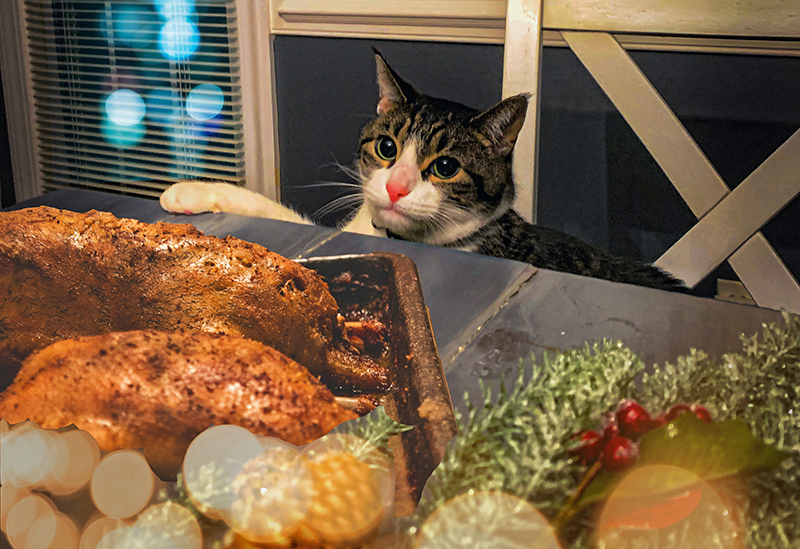
Lee esto en español —>
Happy Paw-lidays! As festivities begin, we want all involved to have a joyful and safe holiday season. Here are some tips to help you keep your four-legged loved ones out of mischief:
No Pawcuterie Boards, Please!
Many already know chocolate is a big no-no for our pets, but keep in mind that almost all human food is high in fat content—and that can lead to big issues! Keep any alcohol, bones, fatty, sweet, or spicy foods in places your pet cannot reach. Visit the ASPCA website for some great information on what not to feed
Instead of human food, consider keeping the dinner portion of your pet’s food in a container for yourself and your guests to use as “treats” throughout the evening.
Instead of showing your love through food, consider switching out toys (perfect excuse for an early gift), adding catnip to some new or old favorite ones, or looking up some fun DIY food puzzles to make with the family!

Tempting Trash
Keep trash away from your pets by securing the lids or taking it out immediately. Think about what we’re likely to throw away…
- Fats and bones can lead to obstructions, pancreatitis, vomiting, diarrhea, and other issues that can result in a veterinary emergency.
- Leftover dough can rise in your pet’s belly and cause bloat.
- Leftover sweets can contain xylitol (sugar substitute), which can cause low blood sugar, seizures, liver failure, or even death.
- Strings/tinsel, aluminum foil, plastic wraps, and broken ornaments/glass can cause foreign body obstructions and serious injuries.
- Old batteries can cause acid burns all the way from the mouth to the stomach!
Open Flames and Toxic Essential Oils
Keep your eye on any open flames, including menorahs, scented candles, stoves, or fireplaces, and keep them out of reach, since you are more likely to be distracted during this busy time.
Essential oils are not only irritating to our pets’ sensitive noses, but cats can absorb the oils through their skin or lick it off their fur after it has been diffused in the air. Toxicity can occur quickly or after prolonged exposure.
- Cinnamon, citrus, peppermint, pine, pennyroyal, sweet birch, tea tree (malaleuca), wintergreen, and ylang ylang oils are all toxic to cats.
Instead of essential oils to scent your home, consider baking cookies right before guests arrive (or every night; we don’t judge).
Holiday Paw-ties and Decor
- Christmas trees
- Keep secure by tying to the ceiling or doorframe and secure with a sturdy tree stand. Cat parent pro tip: Place horizontal and vertical scratching posts near the tree. Providing both types of scratching posts will increase the chances of your kitty using the post instead of the tree!Do not allow your pets to drink the water from live trees as this can cause gastrointestinal upset. Also, do not add aspirin, sugar, or any other additives to the water.
- Keep tinsel and ornaments that can be broken or that are made from food-based materials (such as salt-dough) out of reach of pets to avoid injuries such as intestinal blockage.
- Electrical cords and lights
- Chewing on the cords and lights can cause severe burns. Consider covering the cords with PVC pipes, offering alternatives like chew toys and treats, or using pet-safe bitter spray to keep from chewing cords.
- Unplug decorations when not in use.
- Flowers and festive plants
- Many common holiday plants can be poisonous to pets if ingested. Visit the ASPCA Animal Poison Control Center for a list of plants that are toxic to dogs and cats.
This time of year can also be louder than usual at home and in the neighborhood. For information on helping your pets get through loud noises, such as fireworks, see our June blog post.
We will be closed from December 24 through 27 and from December 31 through January 2, so please contact your local 24/7 clinic or call ASPCA or the Pet Poison Helpline (see numbers below) if you’re unsure of next steps. While consultation fees may apply (usually between $65 and $75), knowing the next steps for the health of your pet is priceless!
ASPCA Poison Control: (888) 426-4435
365 days a year, 24/7
Pet Poison Helpline: (855) 764-7661
365 days a year, 24/7
– Dr. Ana Valbuena
Como mantener las mascotas seguras durante los días festivos!
¡Felices fiestas! ¡A medida que comienzan las festividades, queremos que todos los involucrados tengan una temporada navideña alegre y segura! Aquí hay algunos consejos para ayudarlo a mantener a sus seres queridos de cuatro patas fuera de las travesuras:
¡No a las tablas de ‘pawcuterie’, por favor!
- Muchos ya saben que no se les puede dar chocolate a nuestras mascotas, pero tenga en cuenta que casi todos los alimentos humanos son altos en contenido de grasa y pueden causar problemas. Mantenga cualquier tipo de alcohol, huesos, alimentos grasosos, dulces o comidas picantes en lugares fuera del alcance de sus mascotas. Visite el sitio web de ASPCA para más información sobre alimentos a evitar.
- En lugar de comida humana, considere mantener la porción de la cena de sus mascotas en un recipiente para usarlo como “golosinas” durante toda la noche.
- En lugar de mostrar su amor a través de la comida, considere cambiar los juguetes (excusa perfecta para un regalo temprano), agregar ‘catnip’, o comprar/’DIY’/hacer rompecabezas de comida con la familia.

Basura tentadora
- Mantenga la basura alejada de sus mascotas asegurando las tapas o sacándola inmediatamente. Piensa en lo que es probable que tiremos a la basura…
- Grasas y huesos pueden provocar obstrucciones, pancreatitis, vómitos, diarrea y otros problemas que pueden resultar en una emergencia veterinaria.
- La masa sobrante puede elevarse en el vientre de sus mascotas y causar distensión abdominal.
- Los dulces pueden contener xilitol (sustituto del azúcar), que puede causar niveles bajos de azúcar en la sangre, convulsiones, insuficiencia hepática o incluso la muerte.
- Las cuerdas / oropel, el papel de aluminio, las envolturas de plástico y los adornos / vidrios rotos pueden causar obstrucciones y lesiones graves.
- Las baterías viejas pueden causar quemaduras de ácido desde la boca hasta el estómago.
Llamas abiertas y aceites esenciales tóxicos
- Mantenga su ojo en cualquier llama abierta como menorás, velas perfumadas, estufas o chimeneas durante esta temporada y manténgalas fuera de su alcance, ya que es más probable que nos distraigamos durante este tiempo.
- Los aceites esenciales no solo son irritantes para la nariz sensible de nuestras mascotas, sino que los gatos pueden absorber los aceites a través de su piel o lamerlo de su pelaje después de ser difundidos en el aire: la toxicidad puede ocurrir rápidamente o después de una exposición prolongada.
- La canela, los cítricos, la menta, el pino, el poleo, el abedul dulce, el árbol de té (malaleuca), la gaulteria y los aceites de ylang ylang son tóxicos para los gatos.
- En lugar de aceites esenciales, considere hornear galletas justo antes de que lleguen los invitados (o todas las noches- no juzgamos).
Fiestas y decoración navideña
- Árboles de Navidad
- Asegure el árbol navideño atándolo al techo o al marco de la puerta y asegúrelo con un soporte de árbol resistente.
- Consejo profesional para padres de gato: coloque un poste de rascado horizontal y vertical cerca del árbol
- ¡Proporcionar ambos tipos de postes para rascar aumentará las posibilidades de que su gatito use el poste en lugar del árbol!
- No permita que sus mascotas beban el agua de los árboles vivos, ya que esto puede causar malestar gastrointestinal.
- No agregue aspirina, azúcar o cualquier otro aditivo al agua.
- Mantener los adornos y el oropel que se pueden romper o hacer de materiales a base de alimentos, como la masa de sal, debe mantenerse fuera del alcance de las mascotas para evitar lesiones como la obstrucción intestinal.
- Cables eléctricos y luces
- Masticar los cables y las luces puede causar quemaduras graves, así que considere cubrir los cables con tubos de PVC, ofrezca otras alternativas de masticación como juguetes y golosinas, o compre aerosol amargo que sea seguro para mascotas.
- Desenchufe las decoraciones cuando no estén en uso.
- Flores y plantas festivas
- Muchas plantas navideñas pueden ser venenosas para las mascotas si se ingieren. Visite ASPCA para obtener una lista de plantas que son tóxicas para perros y gatos.
¡Esta época del año también puede ser más ruidosa de lo habitual en casa y en el vecindario! Para obtener más información sobre cómo ayudar a sus mascotas a superar ruidos fuertes como los fuegos artificiales, ¡consulte nuestra publicación de junio!
Estaremos cerrados del 24 al 27 de Diciembre y del 31 de Diciembre al 2 de Enero, así que comuníquese con su clínica local las 24 horas del día, los 7 días de la semana o llame a ASPCA o a la línea de ayuda de envenenamiento para mascotas (consulte los números a continuación) si no está seguro de los próximos pasos. Se pueden aplicar tarifas de consulta (generalmente entre $65-75).
ASPCA Poison Control: (888) 426-4435
365 días al año, 24/7
Línea de ayuda de envenenamiento para mascotas: (855) 764-7661
365 días al año, 24/7
– Dr. Ana Valbuena
Why Bringing Your Cat to the Vet Is Like an Alien Abduction…
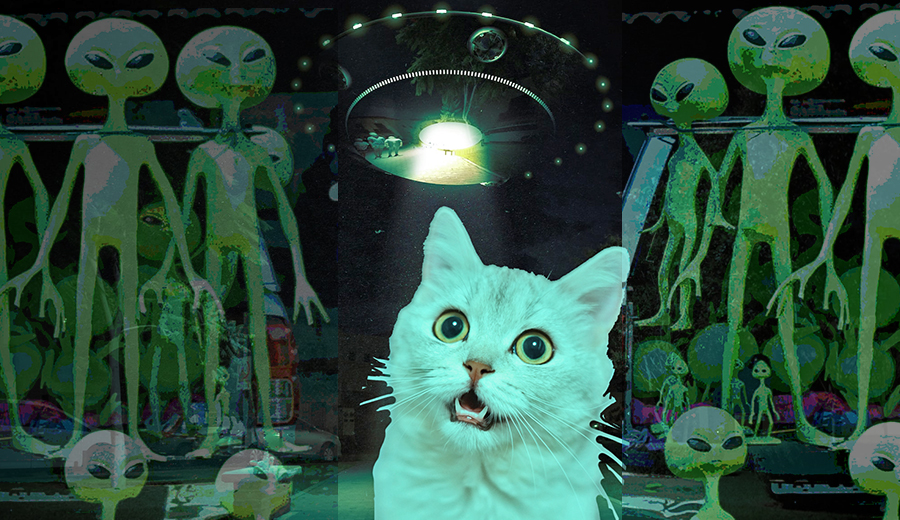
…And What You Can Do to Help
After a decade in practice, I’m thankful I’ve only had to go the hospital for a cat bite once. Since then, I’ve gained a lot of experience and understanding of the feline psyche, and my best summation of how cats perceive going to the vet is this: It’s an alien abduction.
Think about it. For the most part, cats live their whole lives in a relatively small area, and an overwhelming majority of them love it that way.
The most important aspect of a cat’s life is their territory (which includes you). Their territory is their world, their home planet.
Most cats rarely travel in cars and only ever see a travel carrier when they are headed to the vet. Imagine, you’re living your life on your home planet, then you are forced into a pod, and thrust into a metal vessel, and taken to a faraway place that smells aseptic and strange. While there, a weird, hairless ape pokes and prods you. Then, you are thrust back into the pod, whisked home, and your owner acts like nothing happened.
I’m honestly surprised more cats haven’t attacked me. I’d like to think I’d put up a fight too, if I was abducted by aliens. However, maybe if they had a nice spread out and some calming aromatherapy, I’d be amenable to some polite questioning.
Making the Vet Visit as Low Stress as Possible
So that’s what we try to do for your feline family members. Here at Medical District Veterinary Clinic, we are Fear Free Certified. This means all the staff members here have taken training in how to make the veterinary experience as low stress as possible.
We have cat treats at the ready, Feliway spray aplenty, and a separate cat area. We also have gone to great lengths to learn how cats think and how to read their body language. We understand what’s important to them.
Cats often get a bad rap. People think that cats are aloof and don’t care about anything, but cats care about everything! Please know that we are doing our best to be peaceful and compassionate alien overlords.
Try This at Home
There are a few things you can do as well to make the trip to the vet a little less stressful. The first is getting your furry felines accustomed to the carriers you use to take them places.
Just bringing the carrier out before a vet visit can be a trigger. If you’re able to leave the carriers out, put your cat’s favorite treats or toys in there. This small step can help greatly to reduce your cat’s aversion to the carrier.
You can also try using products like Feliway spray, Composure treats for cats, or Rescue Remedy. If you think your kitty needs something stronger, talk to us and we may prescribe medications to help make the visit less stressful. For more information about eliminating the stress in your cat’s life, The Ohio State University Veterinary College has a wonderful site call the Indoor Pet Initiative with information about dogs and cats.
So remember, next time Fluffy’s wellness exam comes around, you may be envisioning All Creatures Great and Small, but they may be thinking more Schwarzenegger in Predator.
—Alyssa Kritzman, DVM
FAQs on CCL: Cranial Cruciate Ligament Injuries in Dogs
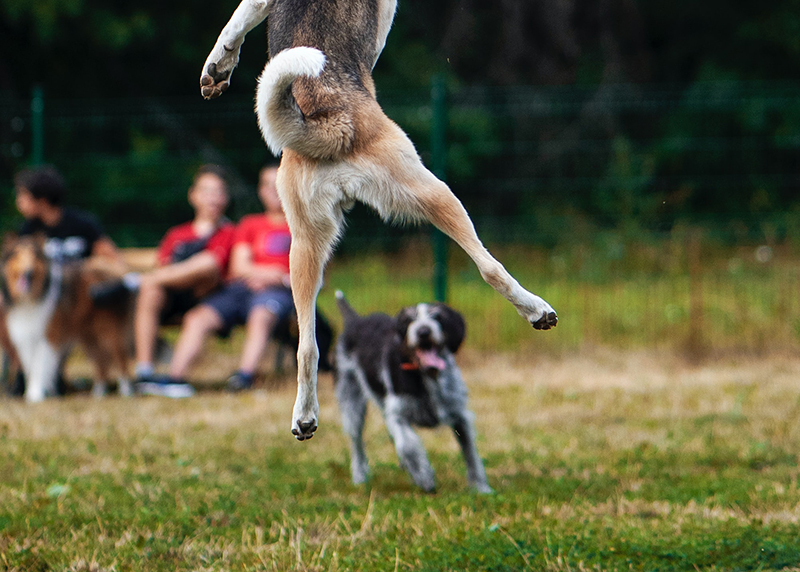
I frequently speak with pet owners whose dog has a suspected CCL injury. Here are the most common questions these owners have.
What is a CCL (cranial cruciate ligament)?
The cranial cruciate ligament is a ligament inside the knee of dogs that provides stability of the knee when a dog runs and walks. This ligament is very similar to the anterior cruciate ligament (known as the ACL) in people. These ligaments in dogs and people have nearly identical anatomy but different names because dogs walk on four limbs and people on two. CCL ligaments are only found in dogs’ back legs.
How is an injury to this ligament diagnosed?
In most cases, dogs present to the veterinary clinic with a back leg lameness or limp. Veterinarians will examine the dog, trying to isolate the source of pain. Veterinarians use two techniques to test the stability of the knee: cranial tibial thrust and cranial drawer. If there is thrust and/or drawer present in a dog’s knee, this indicates there is a CCL injury. X-rays are often recommended to help rule out any other causes of pain or lameness, but the ligament itself cannot be seen on x-rays. There are some x-ray findings that make veterinarians suspicious of underlying CCL injury, but true diagnosis is made from physical exam and laxity in the knee joint.
How did this rupture happen?
In dogs, cranial cruciate ligament injury and/or rupture is thought to be due to degeneration of the ligament over time. Unlike people, where a traumatic injury – often sports-related – causes ACL injuries, in dogs the cause is usually degeneration, which leads to injury or even rupture through normal activity. Although a traumatic injury can cause a CCL rupture in dogs, it is less common.
What can we do to help our dog feel better?
When a dog experiences a CCL injury, anti-inflammatory pain medications and rest are recommended. Human pain medications are not safe for dogs, so be sure to consult your veterinarian to discuss appropriate medications for your dog. In addition to rest and medications, surgery is the gold standard for treatment of a CCL injury. Various surgical techniques are available, and your veterinarian will discuss the best option for your dog.
How much does surgery cost?
I recommend that owners see a board-certified surgeon for their pet’s orthopedic surgery. These veterinarians have had additional training to specialize in advanced surgical techniques. As previously mentioned, there are multiple different surgical stabilization techniques for CCL injuries. The most-performed technique in the Chicago area is the Tibial Plateau Leveling Osteotomy (TPLO). These procedures cost between $4,000 to $6,000 in Chicagoland.
Can we use a brace like in humans?
Unfortunately, braces and/or wraps are typically not beneficial in dogs. This is because dogs walk on their tiptoes, so their knee is always bent. (Try it: If you stand on your tiptoes, your knee will be bent too). We humans walk flat-footed, so our weight can transfer from our hip to heel. Since this weight transfer cannot occur in dogs, braces are ineffective.
What if surgery is not an option?
In many cases, surgery is not financially feasible, or it may not be in the best interest of the dog due to other underlying health issues. In these cases, I recommend multi-modal therapy. This includes strict rest for 4 to 8 weeks, long-term non-steroidal anti-inflammatories (NSAIDs), high-quality omega-3 supplements, and glucosamine/chondroitin supplements, along with weight loss. After the period of rest, physical therapy can be very beneficial as well.
With time, the knee will stabilize, but with the stabilization comes more arthritis formation. The body develops arthritis to try to stabilize the knee joint. Surgery on the knee reduces instability, so the body does not form as much arthritis in that joint. However, even with arthritis, dogs are able to compensate well. Many dogs do well without surgery, although the injured leg may always cause some discomfort. The dogs that typically do not do well without surgery are very large dogs that already have joint disease, such as advanced hip dysplasia.
One exception to the surgery rule is toy breed dogs and cats. We do not commonly see CCL injuries in these pets, but when we do, they typically do really well with cage rest and medications and surgery is not often needed.
What about the other leg?
Unfortunately, over 50% of dogs will rupture their other CCL within a year of the first rupture. This can be explained by the fact that both ligaments are typically degenerating at a similar rate. I like to always warn owners of this because they may be faced with the decision to pursue surgery again soon.
How can we prevent a CCL injury?
Unfortunately, there seems to be a hereditary component. We do not have a good method of determining which dogs that will have CCL injuries in their life. However, maintaining an ideal weight is key to joint health. I would also recommend considering pet insurance prior to any issues. Insurance does not cover pre-existing conditions, so don’t wait until your pet starts limping. I have seen CCL injuries in dogs as young as 6 months old, but most commonly we see them in medium to large breed, active, overweight dogs aged 2 to 6 years old.
Dr. Drew Sullivan
Holiday Toxicities
Para leer el blog en español, haga clic aquí
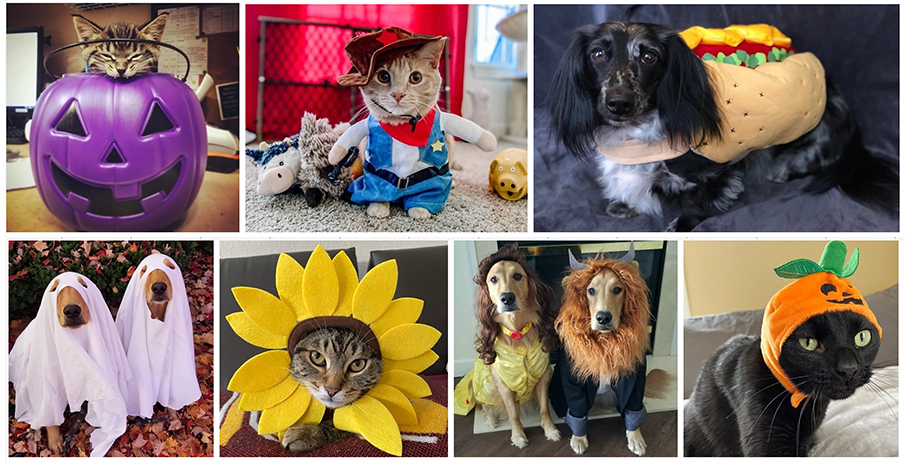
Arriba se muestran mascotas de los estudiantes de la University of Illinois College of Veterinary Medicine.
The end of summer can leave individuals with mixed feelings. Yes, it means the end of pool parties and summer BBQs, but it’s the start of sweater weather, pumpkin spice, and the holiday season. And with that comes family gatherings and, most important, sweet treats and great food!
Halloween and Chocolate
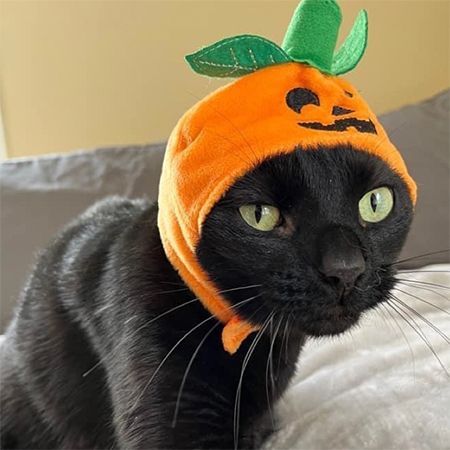
First on our list is the all-time favorite holiday of most kids (and many adults), Halloween. Not only do you get to dress yourself and your pets up as silly characters, but you can eat all of the candy in the world and not be judged.
That comes with a few responsibilities though. As many of you might or might not know, chocolate can be highly toxic to dogs and cats when ingested. How exactly can chocolate affect your pet, you may ask? Chocolate contains a toxin called theobromine, which animals can be very sensitive to because they cannot metabolize it as well as people can.
The amount of theobromine varies by the type of chocolate consumed. For example, baking chocolate contains more theobromine than milk chocolate, which contains more theobromine than white chocolate. In mild cases you may see signs of stomach upset like vomiting, diarrhea, and inappetence. More severe signs include seizures, panting, restlessness, nervousness, and twitching.
Regardless of the amount and type of chocolate consumed by your pet, it is important to reach out to either your local veterinarian or animal poison control. These resources can guide you to your next step to assure your pet stays safe and healthy.
Xylitol
An ingredient that can be harmful and even lethal to pets is called xylitol. Xylitol is a sugar substitute that can be found in many sugar-free candies, gum, mints, vitamin gummies, baked goods, etc.
Animal poison control (fees apply)
can be reached at:ASPCA National Animal
Poison Control Center:
888-426 4435
Pet Poison Helpline: 800-213-6680
Fun fact: toothpaste can also contain xylitol due to its flavor and antibacterial properties. This sugar substitute can be lethal in as little as an hour if a large amount is consumed by your dog. Xylitol consumption can lead to hypoglycemia, which can cause vomiting, weakness, incoordination, tremors, and ultimately seizures. It can also lead to liver failure due to excessive insulin release.
When in doubt and your pet gets a hold of and consumes something that you suspect contains xylitol in it, it is important to note the amount ingested and take your pet along with the original packaging to your local veterinarian for further treatment. You can also contact poison control for further recommendations.
Holiday Feasts
Turkey, ham, stuffing, mashed potatoes, mac and cheese, and my all-time favorite tamales. Now we’re getting into the food-filled holidays, which are my personal favorites. With some of our favorite dishes come some ingredients that aren’t the best for our furry friends. Onions, garlic, and chives give many dishes the extra taste they need.
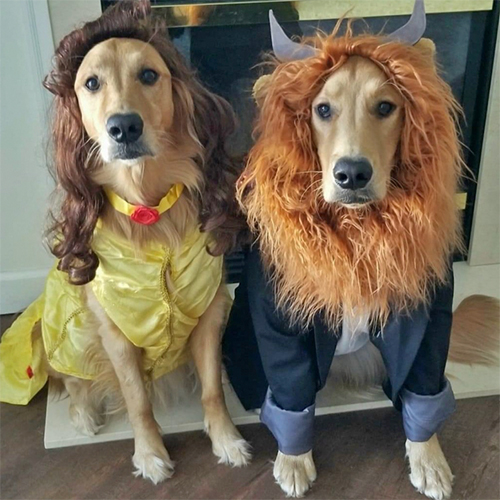
These savory additions can be harmful to our pets if ingested in a large quantity, even in dried, powdered, or cooked forms. The first signs that something is wrong are vomiting, diarrhea, gastroenteritis, and abdominal pain. More severe signs can take several days, but you can see increased heart and respiratory rate/effort, weakness, discolored urine, collapse, kidney damage, and even death.
These ill effects arise from oxidizing agents in onions and garlic, which cause oxidative hemolysis, meaning the destruction of red blood cells. We need red blood cells to carry oxygen throughout the body. If these blood cells are destroyed, vital organs cannot get enough oxygen. Early treatment can decrease the risk for serious effects, so if you suspect your pet has ingested something they shouldn’t have, contact your local veterinarian or poison control center.
It is also important to note that although ham off the bone is a delicacy during the holidays, feeding your domestic pet raw bones can be very dangerous. Bones can be a choking hazard and there is risk of injury if the bone splinters and becomes lodged or punctures your pet’s digestive tract. A foreign body surgery is a medical emergency!
High-Fat Foods
Now I won’t get into Christmas yet. I’ll save that for a later post. What I will mention is—yes, you guessed it!—pancreatitis.
What exactly is pancreatitis? Well, it’s inflammation of the pancreas. The pancreas is a small organ that is located just under the stomach and near the duodenum (a part of the small intestine). Its main job is to secrete digestive enzymes that help break down the nutrients in the foods we eat. It also secretes insulin and glucagon which help regulate the usage of those nutrients.
How do our pets get pancreatitis? A sudden meal high in fat is one of the classic presentations. Be sure to put all your holiday leftovers away in a place your pets cannot reach them, or they can get pancreatitis if they ingest a large amount of fatty foods. Other causes of pancreatitis include hormonal imbalances like diabetes mellitus and hypothyroidism, as well as certain drugs, pancreatic trauma, tumors, and obesity.
When there is inflammation of the pancreas, clinical signs that you may see in your pets include abdominal pain, loss of appetite, vomiting, diarrhea, and fever. If you suspect your pet might have gotten into food they shouldn’t have and notice any of the clinical signs mentioned above, reach out to your local veterinarian for further recommendations/treatment.
– Dr. Angelica Calderon
Toxicidades de Mascotas en Los Días Festivos
Llegar al final del verano puede tener personas con diferentes sentimientos. Sí, al terminal el verano significa el final de las fiestas en la piscina y las carnes asadas; sin embargo, es el comienzo del clima de suéter, pumpkin spice y los días festivos. Y con eso vienen las reuniones familiares y lo más importante, los dulces y la excelente comida!
Halloween y chocolate
Lo primero en nuestra lista es el día festivo favorito de la mayoría de los niños (y muchos adultos), Halloween. No solo puedes vestirte a ti y a tus mascotas como personajes chistosos, sino que también puedes comer todos los dulces del mundo y no ser juzgado.
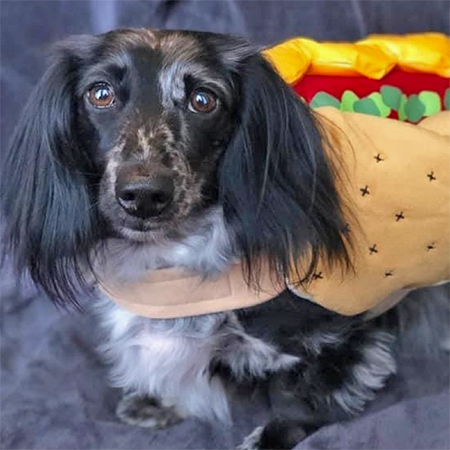
Sin embargo, eso conlleva algunas responsabilidades. Como muchos de ustedes saben, el chocolate puede ser altamente tóxico para perros y gatos cuando se ingiere. Cómo puede afectar exactamente a su mascota? Bueno, la toxina del chocolate que puede afectar a perros y gatos se llama teobromina, a la que los animales pueden ser muy sensibles porque no pueden metabolizarla tan bien como las personas pueden.
La cantidad de teobromina varía según el tipo de chocolate consumido. Por ejemplo, el chocolate para hornear contiene más teobromina que el chocolate con leche, que contiene más teobromina que el chocolate blanco. En casos leves, puede ver signos de malestar estomacal como vómitos, diarrea e inapetencia. Los signos más graves incluyen convulsiones, jadeo, inquietud, nerviosismo y espasmos.
Independientemente de la cantidad y el tipo de chocolate que consuma su mascota, es importante que se comunique con su veterinario local o con el centro de control de envenenamiento, donde podrán guiarlo mejor hacia el siguiente paso para garantizar que su mascota se mantenga segura y saludable.
El xilitol
Un ingrediente que puede ser dañino e incluso letal para las mascotas se llama xilitol. El xilitol es un sustituto del azúcar que se puede encontrar en muchos dulces que dicen “sugar free”, goma de mascar/chicles, mentas, vitamínicas en goma, galletas, etc.
Centro Nacional de Control de
Envenenamiento Animal de ASPCA:888-426 4435
Línea de ayuda para
envenenamiento de mascotas:800-213-6680
Dato curioso: la pasta de dientes también puede contener xilitol debido a su sabor y propiedades antibacterianas. Este sustituto del azúcar puede ser letal en tan solo una hora si su perro consume una gran cantidad. El consumo de xilitol puede provocar hipoglucemia que puede causar vómitos, debilidad, falta de coordinación, temblores, y convulsiones. También puede provocar insuficiencia hepática debido a la liberación excesiva de insulina.
En caso de duda y su mascota se apodera y consume algo que sospecha que contiene xilitol, es importante anotar lacantidad ingerida y llevar a su mascota junto con el empaque original a su veterinario local para recibir tratamiento. También puede comunicarse con el control de envenenamiento para obtener más recomendaciones.
Los días festivos llenos de comida
Pavo, jamón, relleno, puré de papas, macarrones con queso y mi favorito, tamales. Ahora estamos entrando en los días festivos llenos de comida. Con nuestros platillos favoritos vienen algunos ingredientes que no son los mejores para nuestras mascotas. Las cebollas, el ajo y las pasas son unos ingredientes principales en muchos platillos que les dan el último toque de sabor a nuestra comida.
Estos pueden ser dañinos para nuestras mascotas si se ingieren en gran cantidad, incluso en forma seca, en polvo o cocida. Los primeros signos que puede notar son vómito, diarrea, gastroenteritis y dolor abdominal. Los signos más graves pueden tardar varios días, pero puede observar un aumento de la frecuencia/esfuerzo cardíaco y respiratorio, debilidad, orina descolorida, colapso, daño renal e incluso la muerte.
Esto sucede porque contienen agentes oxidantes que provocan hemólisis oxidativa, lo que significa destrucción de los glóbulos rojos. Necesitamos glóbulos rojos para transportar oxígeno por todo el cuerpo y, si se destruyen, los órganos vitales no pueden obtener suficiente oxígeno. El tratamiento temprano puede disminuir el riesgo de efectos graves, por lo que si sospecha que su mascota ha ingerido algo que no debería, comuníquese con su veterinario local o con el control de envenenamiento.
También es importante tomar en cuenta que aunque el jamón es plato muy común en los días festivos, alimentar a tu mascota con huesos crudos puede ser muy peligroso. Esto puede ser un peligro de asfixia y existe el riesgo de lesiones si el hueso se astilla y se atasca o perfora el tracto digestivo de su mascota. Una cirugía para remover un hueso del estómago o intestinos es una emergencia médica!
Otras comidas que debe evitar alimentar a sus mascotas
Una comida con mucha grasa
Ahora no entraré en Navidad todavía, lo guardaré para otro blog. Lo que mencionaré es, sí lo adivinaste, pancreatitis.
Puede preguntarse qué es exactamente la pancreatitis, bueno, es la inflamación del páncreas. El páncreas es un órgano pequeño que se encuentra justo debajo del estómago y cerca del duodeno (una parte del intestino delgado). Su trabajo principal es secretar enzimas digestivas que ayudan a descomponer los nutrientes de los alimentos que comemos. También secreta insulina y glucagón que ayudan a regular el uso de esos nutrientes.
Cómo contraen pancreatitis nuestras mascotas? Pues, una comida repentina con mucha grasa es una de las presentaciones clásicas. Asegúrese de guardar todas las sobras de las fiestas en un lugar donde sus mascotas no puedan alcanzarlas, o pueden contraer pancreatitis si ingieren una gran cantidad de alimentos grasos. Otras causas de pancreatitis incluyen desequilibrios hormonales como diabetes mellitus e hipotiroidismo, ciertos medicamentos, trauma pancreático, tumores y obesidad.
Cuando hay inflamación del páncreas, los signos clínicos que puede ver en sus mascotas incluyen dolor abdominal, pérdida de apetito, vómitos, diarrea y fiebre. Si sospecha que su mascota pudo haber ingerido alimentos que no debería y nota cualquiera de los signos clínicos mencionados anteriormente, comuníquese con su veterinario local para obtener más recomendaciones/tratamiento.
– Dr. Angelica Calderon
Fleas and Ticks Beyond Summer
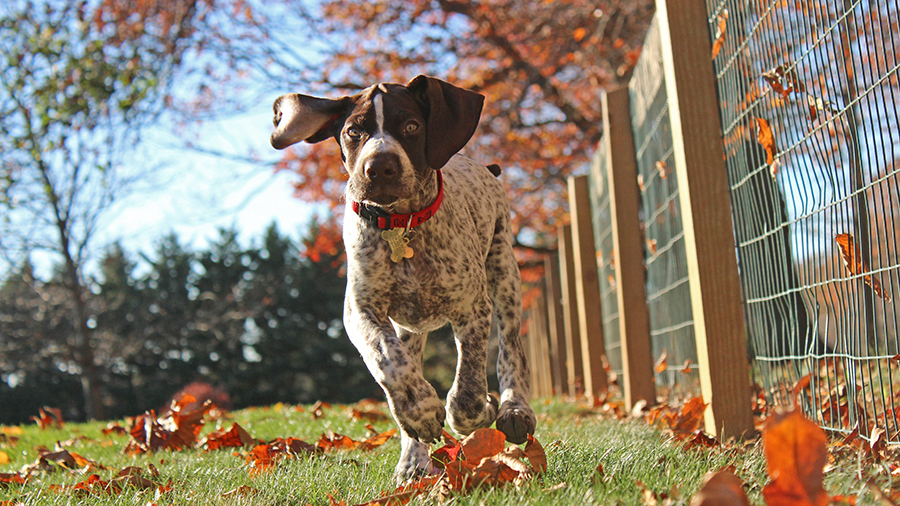
Summer is winding down, and soon we’ll be able to enjoy cooler autumn weather. Along with the cooler weather comes the misconception that our pets no longer need their monthly flea and tick prevention.
Although it’s true that a lot of tick species are most active in the summer, there are some species of ticks that remain active in the fall in Illinois. Likewise, flea season in Illinois can last well into the winter. In fact, flea and tick infestations are most frequently encountered in September through November. Without the protection of monthly prevention, fleas and ticks can cause a variety of health issues for our pets.
Fleas
Our pets can get fleas from just about anywhere, including from other animals, outdoors, and even an indoor environment if the fleas hitch a ride from the outside on shoes. Fleas can cause itching and discomfort, and if your pet is allergic to fleas, they can develop flea allergy dermatitis. Flea allergy dermatitis causes intense itching, severe discomfort, hair loss, and secondary skin infections. In severe flea infestations, our pets can develop anemia secondary to blood loss from the fleas feeding. Finally, fleas also put our pets at risk for intestinal parasites called tapeworms, and Bartonella, a bacterial infection that may cause severe disease and require up to 6 weeks of treatment.
Ticks
Ticks can attach during walks, hikes, or any outdoor activity. This is especially true in wooded areas or places with tall grasses. Ticks can carry Lyme Disease, Rocky Mountain Spotted Fever, Anaplasmosis, and Babesiosis along with other bacterial and protozoal diseases. A variety of clinical signs can develop from these diseases, including swollen joints and lymph nodes, fever, lethargy, loss of appetite, diarrhea and vomiting. In severe cases, pets can develop heart and liver disease and kidney failure.
In addition to the health issues fleas and ticks cause for our pets, they can also infest your household. Clearing your household of these infestations can be labor-intensive, costly, and may take weeks to months to be fully effective.
So, as we approach the cooler months, keep your pets healthy and safe and resist the urge to skip that next monthly dose of their flea and tick prevention.
Dr. Jeanette Barragan
Photo by Tim Golder on Unsplash
